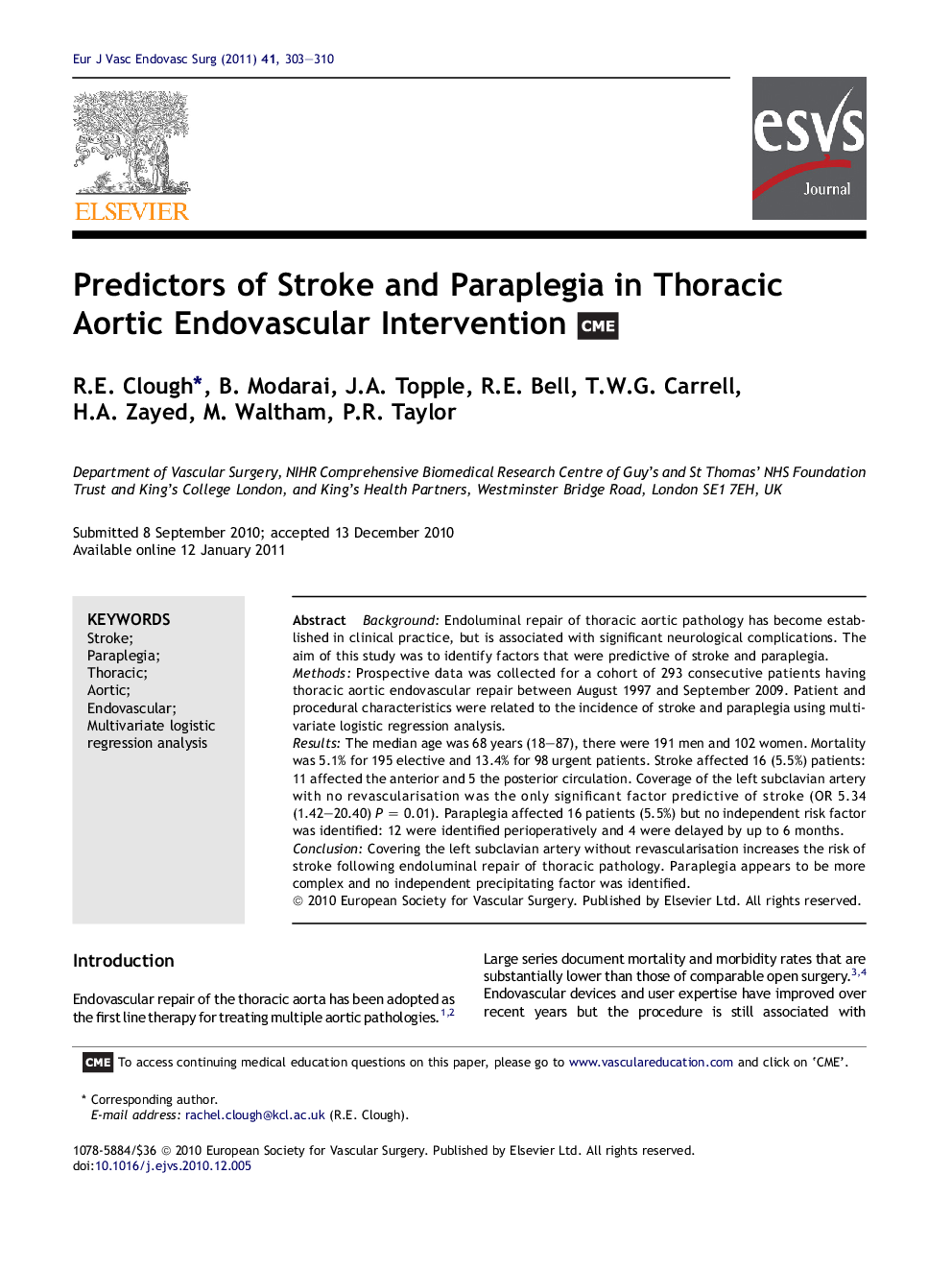| Article ID | Journal | Published Year | Pages | File Type |
|---|---|---|---|---|
| 2913551 | European Journal of Vascular and Endovascular Surgery | 2011 | 8 Pages |
BackgroundEndoluminal repair of thoracic aortic pathology has become established in clinical practice, but is associated with significant neurological complications. The aim of this study was to identify factors that were predictive of stroke and paraplegia.MethodsProspective data was collected for a cohort of 293 consecutive patients having thoracic aortic endovascular repair between August 1997 and September 2009. Patient and procedural characteristics were related to the incidence of stroke and paraplegia using multivariate logistic regression analysis.ResultsThe median age was 68 years (18–87), there were 191 men and 102 women. Mortality was 5.1% for 195 elective and 13.4% for 98 urgent patients. Stroke affected 16 (5.5%) patients: 11 affected the anterior and 5 the posterior circulation. Coverage of the left subclavian artery with no revascularisation was the only significant factor predictive of stroke (OR 5.34 (1.42–20.40) P = 0.01). Paraplegia affected 16 patients (5.5%) but no independent risk factor was identified: 12 were identified perioperatively and 4 were delayed by up to 6 months.ConclusionCovering the left subclavian artery without revascularisation increases the risk of stroke following endoluminal repair of thoracic pathology. Paraplegia appears to be more complex and no independent precipitating factor was identified.
